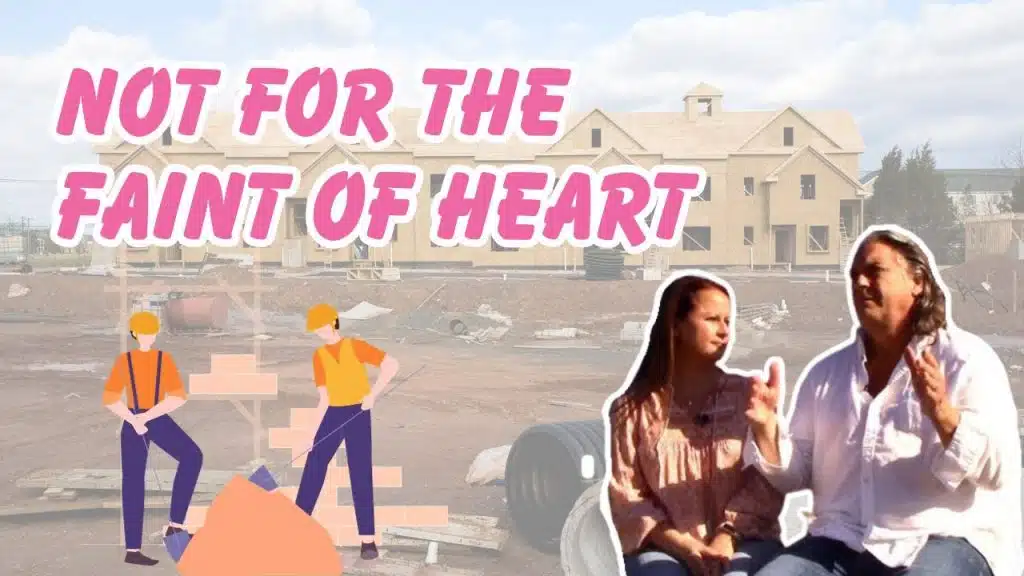Land Development Process
Are you thinking about buying land to custom build your dream home? In this video, we’re going to examine the pros and cons of building your dream house on your own piece of land. This isn’t for the faint of heart, so we’ll talk to a Maryland land developer—who also happens to be my amazing husband—to learn more about the process.
***I highly recommend that anyone attempting to purchase (or sell) land with a real estate agent, ensure that the agent is well-versed in land and understands the contract, the process and your liabilities throughout the process. ***
Contract & Feasibility
Buying land comes with its own set of hurdles before you can pour a foundation and start building. As a homeowner buying one lot, you will go through the same process that developers go through for 10, 20 or 500 lots. There’s a lot to understand about the land – even prior to structuring your offer in terms of feasibility studies and contract contingencies.
You will want to ask for 90 days to study the land, and ensure your financing is solid.
Once the contract is ratified you will need to complete the feasibility period which is when you study the aspects of the land to determine what needs to happen prior to building. The first step is to confirm the zoning and determine if it is adequate for what you want to build, and if it’s not, is it possible to get a variance that will allow you to build the home you want. Re-zoning could take years, and it could become very contentious, so it’s best to know exactly what you’re facing with the land.
Next, find out if there are there are adequate utilities. Does the lot have access to water, sewer, and electricity. Water and sewer are the most difficult. You’ll also want to consider whether the capacities are there to develop the property.
Other things to know are if there are any easements on the property, whether there’s a homeowner’s association that has rules and regulations you have to abide by, whether the property has access to a road, as many properties may not, which is why the land was available to purchase..
It takes quite a bit of money during your feasibility study to see if you can even get to the point of putting a house on the lot that you want. It’s helpful to take a trip down to the county or the municipality you’re building in to discuss your plans with them. This might sometimes be a one-stop-shop—but not always.
Approval From the County And Rezoning
Sometimes you simply need to go to the county to submit plans, and then they tell you everything you need to do. Sometimes, you have multiple places that you may have to get approvals for. It really depends on the county.
Montgomery County and Prince George’s County require you to go to them for zoning issues. For planning issues, you have to go to park and planning. In the Northern Virginia counties, it’s usually a one-stop-shop.
If the property is zoned but it’s slightly under the square footage that is required to build a house, there is a process called a variance. A variance is a zoning tool that you use if your house is big and your setback or side yard requires extra footage. Say you need 10 feet on each side of the plotted lot for your house, with a deck that goes out 8 feet. You can go and apply for a variance to get the 2-foot difference done.
The Home Building Timeline And Costs
Something to consider is a time frame to write into your contract for a feasibility study. When developing one lot to build a house, Jim suggests the longer the better—though 90 days is a good standard to fall back on. In 90 days—if you have your zoning—you can figure out what constraints you have on the property. You can also determine if there’s a clear title on the property, what kind of house you want to build, and what your site costs are going to be.
Of course, it’s important to know your costs as well as how much somebody is going to invest before they get to the point where they may even have to walk away. For example, you could likely hire an engineer to give you the parameters on what you have, which will cost you $10,000 to $15,000. This is completely different than a homebuyer that’s just buying a house and does a home inspection for $500-$1,000. You’d basically be spending $15,000 before you even know if you can do anything with the lot you choose. That money is going to a raw piece of ground that has no existing house on it that you don’t know whether you can build on or not.
Pros And Cons Of Building A Custom House
One of the obvious pros of building a custom house is getting your dream home—if everything works out. If you have a spot that you need your house built on and it has to be on that parcel of land, then maybe it’s worth doing. Additionally, the price of a parcel of ground is often far less than an approved lot.
The cons are mainly going to be the time and cost spent on build a new house. You also risk the money you’re putting into it. You need to be ready to spend $10,000 or $15,000 and also lose $10,000 or $15,000 if you have to move on to the next parcel. Another con is equity. We often tell people when they build a house that they’re not going to walk away with instant equity. You may be into it for more than you could turn around and sell it the day you close. You also may have to wait a while to build up that equity, especially if you bought land in an area that’s not developed yet and you’re the pioneer—though this is how people make good money.
There’s another way to do this if you don’t want to build a house on a raw piece of land and go through this whole process. It’s called tearing down, where you see people building McMansions and tearing houses down. We’re going to cover that in another video, so be sure to check that out!






Wow! This was really helpful. My husband and I are currently over the housing market in the DMV area. The houses are too expensive to be mediocre. Now we are deciding to build a home so we can get exactly what we want. Do you know banks that offer construction loans?
I’m trying to build a low-income housing project.
What a nightmare